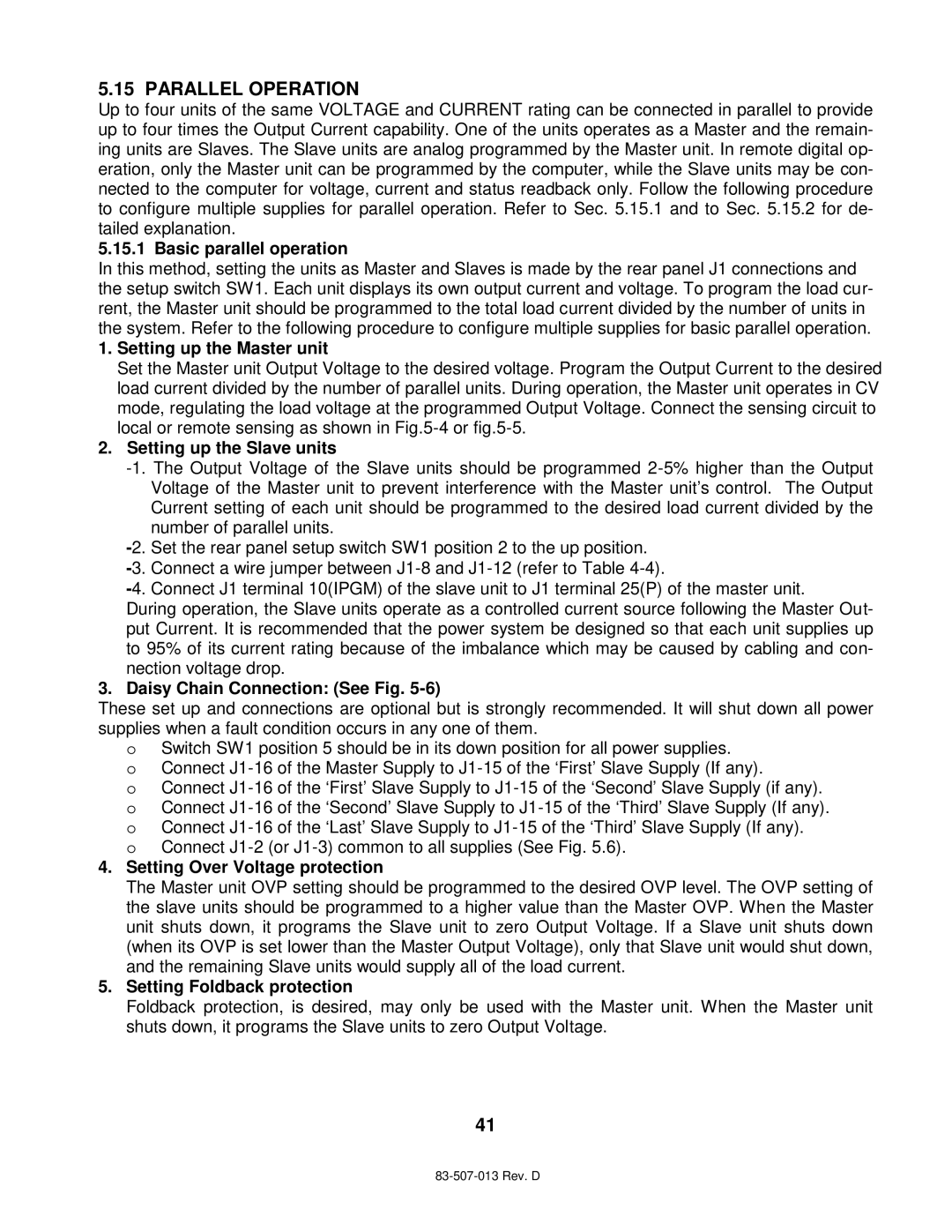5.15 PARALLEL OPERATION
Up to four units of the same VOLTAGE and CURRENT rating can be connected in parallel to provide up to four times the Output Current capability. One of the units operates as a Master and the remain- ing units are Slaves. The Slave units are analog programmed by the Master unit. In remote digital op- eration, only the Master unit can be programmed by the computer, while the Slave units may be con- nected to the computer for voltage, current and status readback only. Follow the following procedure to configure multiple supplies for parallel operation. Refer to Sec. 5.15.1 and to Sec. 5.15.2 for de- tailed explanation.
5.15.1 Basic parallel operation
In this method, setting the units as Master and Slaves is made by the rear panel J1 connections and the setup switch SW1. Each unit displays its own output current and voltage. To program the load cur- rent, the Master unit should be programmed to the total load current divided by the number of units in the system. Refer to the following procedure to configure multiple supplies for basic parallel operation.
1.Setting up the Master unit
Set the Master unit Output Voltage to the desired voltage. Program the Output Current to the desired load current divided by the number of parallel units. During operation, the Master unit operates in CV mode, regulating the load voltage at the programmed Output Voltage. Connect the sensing circuit to local or remote sensing as shown in
2.Setting up the Slave units
During operation, the Slave units operate as a controlled current source following the Master Out- put Current. It is recommended that the power system be designed so that each unit supplies up to 95% of its current rating because of the imbalance which may be caused by cabling and con- nection voltage drop.
3.Daisy Chain Connection: (See Fig. 5-6)
These set up and connections are optional but is strongly recommended. It will shut down all power supplies when a fault condition occurs in any one of them.
oSwitch SW1 position 5 should be in its down position for all power supplies.
oConnect
o Connect
o Connect
4.Setting Over Voltage protection
The Master unit OVP setting should be programmed to the desired OVP level. The OVP setting of the slave units should be programmed to a higher value than the Master OVP. When the Master unit shuts down, it programs the Slave unit to zero Output Voltage. If a Slave unit shuts down (when its OVP is set lower than the Master Output Voltage), only that Slave unit would shut down, and the remaining Slave units would supply all of the load current.
5.Setting Foldback protection
Foldback protection, is desired, may only be used with the Master unit. When the Master unit shuts down, it programs the Slave units to zero Output Voltage.
41
